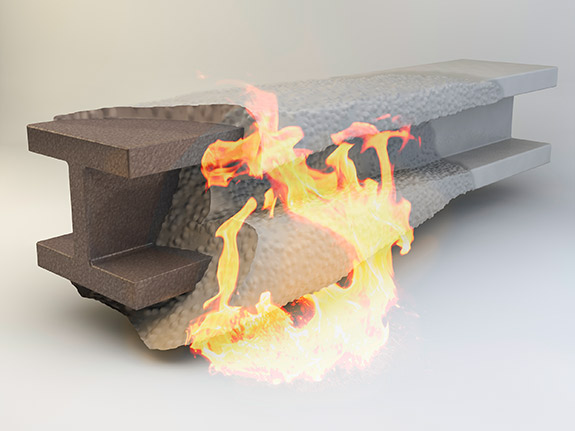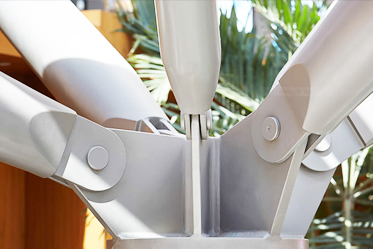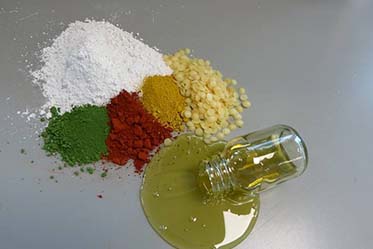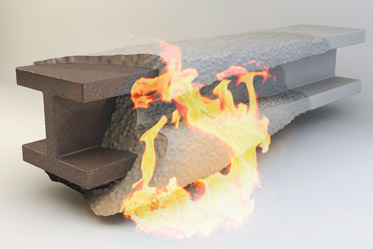Steel fire protection coatings – Mode of action
Steel fire protection coatings – Mode of action
In the event of fire, the coating foams up when a temperature of about 120 to 200 °C is reached with a large increase in volume and forms a stable fine-pored carbon foam. This process is also known as intumescence.
Due to its very low thermal conductivity, the carbon foam insulates the component so that it heats up more slowly and the period until the critical temperature (Tcrit) reaches about 350 to 750 °C is extended.
As the main product, an inorganic layer of titanium phosphates with a very low thermal conductivity is formed.
Carbon dioxide and water are formed as by-products. In addition, minimal quantities of ammonia, carbon monoxide and nitrogen oxides are released in the event of fire. Due to their very low concentration, however, these can be neglected in comparison to the reaction products of the actual fire loads and do not pose any environmental or health hazard.
In order for the intumescent to develop its full effectiveness in an emergency, adjacent components must not hinder foaming. To prevent heat transfer, adjoining steel structures without a fire resistance class must also be coated over a length specified in DIN 4102 (min. 30 cm).





